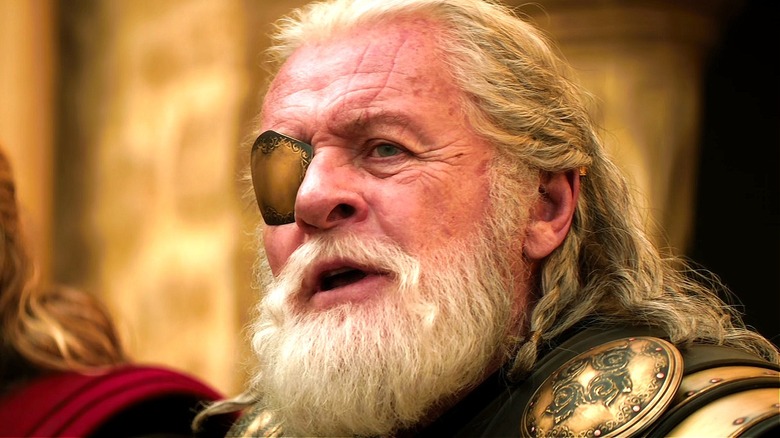Why The Ravens In The MCU Mean More Than You Think
In the decade of films he has appeared in, Thor (Chris Hemsworth) has gone through a great transformation in the Marvel Cinematic Universe. Taika Waititi's "Thor: Ragnarok" has been instrumental in Thor finding his path as well as capitalizing on Hemsworth's sense of humor. But Thor's earlier appearances are noteworthy as well. Taken and expanded from Norse mythology, the characters of Asgard have lore that spans far and wide. The first "Thor" film introduces Thor's complicated relationship with Loki (Tom Hiddleston) as well as other motifs that occur throughout the films.
In addition to counting on Loki's constant betrayals, viewers can also count on another visual cue reminiscent of old Norse mythology. In "Thor," "The Avengers," and "Thor: The Dark World," a pair of ravens are often seen following Thor and his exploits. According to the Guardian, ravens are tricksters, just like Loki, but the appearances of these creatures have a more significant meaning.
The ravens are characters in the comics
The ravens are a familiar sight in Asgard. Typically, they are seen in the presence of Odin (Anthony Hopkins) in the great hall and even when the Allfather succumbs to the Odinsleep. In the comics, these two ravens are extensions of Odin. Named Munin and Hugin, the birds are more than just ordinary feathered friends — they are sentient beings that Odin will send to keep an eye out.
They have enhanced abilities such as endurance and strength. They can also speak and communicate with Odin on the missions that he sends them on. Their abilities make them perfect for their tasks of looking after Thor and Loki, especially when they leave the Asgardian realm. The brothers spend a lot of time in Midgard and even other dimensions. Though the creatures seem like ordinary birds in the films, Munin and Hugin have a higher purpose in the comics and are talented enough to follow Thor to Earth.

